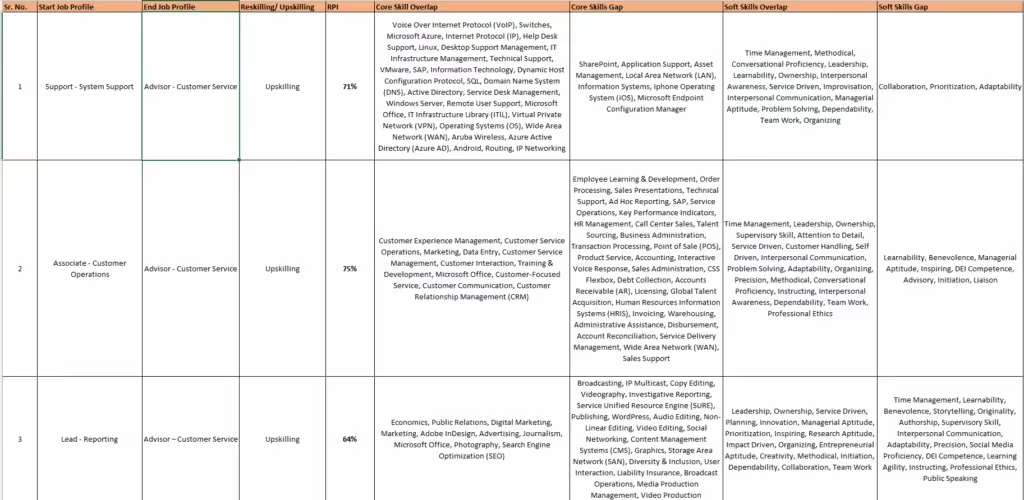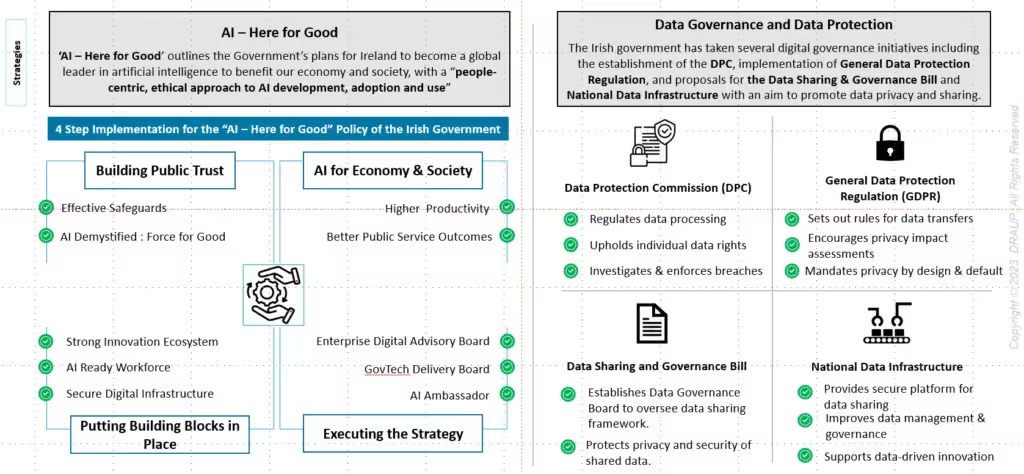Reskill Decisions Intelligence Model: Improving Workforce Adaptability and Job Satisfaction
The workforce landscape is continuously evolving, and with the rapid pace of technological advancement, job roles are also shifting and transforming at an unprecedented rate. As a result, it has become crucial for HR leaders to focus on the upskilling and reskilling of their employees to keep up with these changes.
In our recent workshop, we discussed the importance of identifying the emerging skills required in the job market and the need to train the existing workforce to acquire those skills. By prioritizing the rapid skills transition of existing job roles into emerging skills, HR leaders can ensure that their employees have the skills necessary to adapt to the changing job market and stay ahead of the competition. This, in turn, can lead to improved productivity, higher job satisfaction, and a more engaged workforce.
What are the tactical step to achieve this? Our journey to create innovative solutions for our clients has led us to develop a Reskills Decisions Intelligence Model – an effective decision-making tool that helps them make informed choices.
We developed a Reskill Decision Model to simplify the gaps across various roles. The following are the elements studied.
- Overlap of Core Skills: This refers to the extent to which the core skills required for the start job profile are also relevant to the end job profile. If there is a significant overlap between the two, it may be easier for employees to transition from one job to the other, as they will have a strong foundation of relevant skills to build upon.
- Reskilling or Upskilling Journey: When considering a skills transition, it is important to determine whether it is a reskilling or upskilling journey. Reskilling involves learning entirely new skills that are not directly related to the employee’s current role, while upskilling involves enhancing existing skills or developing new skills that are directly relevant to the employee’s current role.
- Core Skills Overlap: This refers to the degree to which the core skills required for the end job profile are similar to those required for the start job profile. If there is a significant overlap in core skills, it may be easier for employees to acquire the necessary skills for the end job profile.
- Core Skills Gap: This refers to the difference between the core skills required for the start and end job profiles. Employees may require additional training and development to acquire the necessary skills for the end job profile if there is a significant gap in core skills.
- Soft Skills/Power Skills Overlap: In addition to core skills, power skills such as communication, problem-solving, and teamwork are also important for success in many roles. Power skills overlap refers to how the soft skills required for the start job profile are relevant to the end job profile.
- Soft Skills/Power Skills Gap: This refers to the difference between the soft skills required for the start and end job profiles. If there is a significant gap in soft skills, employees may require additional training and development to acquire the necessary skills for the end job profile.
Here is a sample output from the library of 2000-plus roles we developed.

We also discussed what additional capabilities the organization needs to build. We have covered many of these emails by disciplines such as Software, Data, Design, and several corporate functions. We have also pointed out certain new roles, like Prompt Engineering, that are evolving in Technology.
Another key horizontal area that we see emerging is Algorithmic Decision Intelligence. Our enterprises are full of data. What translates data into action is Decision Intelligence. Training on this aspect will be very helpful for HR professionals as they will make many decisions based on data.
Here is a write-up from a Cornell University publication on Decision Intelligence “.
When you conduct your quantitative analysis, the fact that it is quantitative may seem to imply that the data is objectively set definitively and not suited for subjective analysis. In reality, quantifiable metrics include subjectivity at several points, including how the problem is approached and how you elicit the observations of knowledgeable individuals. It may surprise you, but you often encounter subjectivity while framing an objective decision process. You’ll often discover that the questions you’re asking, the types of probabilities you need, and other information won’t involve clear observations. Making a decision, therefore, isn’t always as simple as picking the “best” quantitative option.”
Decision Intelligence, therefore, requires training in the following components
- Decision Frameworks
- Accounting for Subjectivity
- Risk Utility Theories
- Simulation of Outcomes
These four modules will be incredibly helpful for Human Resources as they transform into the next generation of Digital Enterprise. We recently applied the Simulation of Outcomes in a location study. If the outcome is to gain skills for a new-age SDE, what opportunities do we have to transition existing SDEs and adjacent roles into new-age SDEs? The adjacent roles studied are given in the table at a high level.

Overall, we are pretty excited about HR’s role under emerging circumstances. If we plan the initiatives correctly, we can accelerate transformation and adaptation and make the enterprises genuinely care for a great workplace.










.svg)




















.svg)





.svg)
